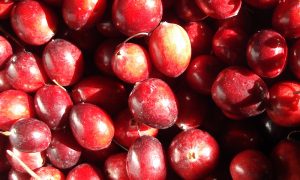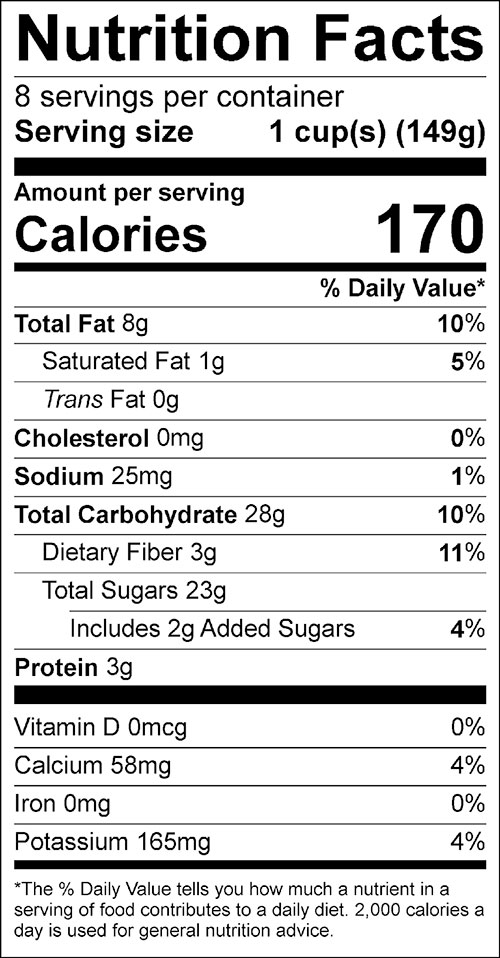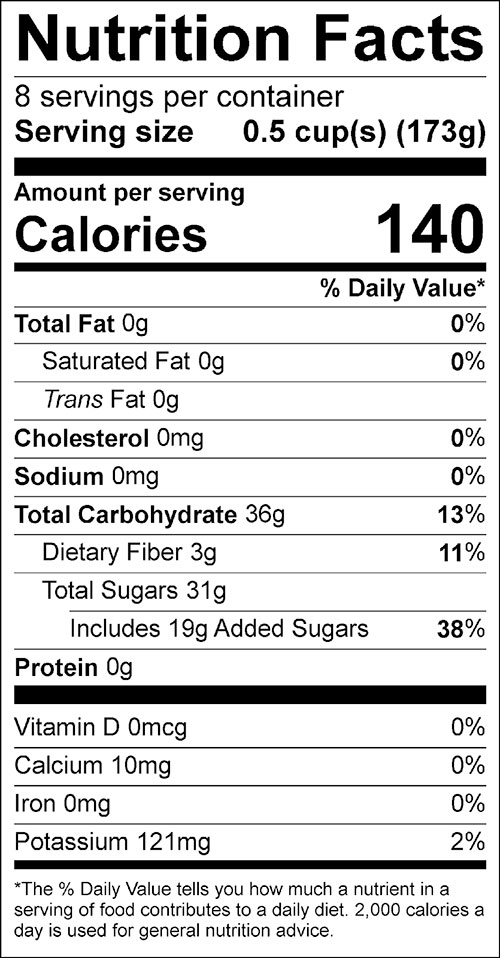Bulletin #4308, Vegetables and Fruits for Health: Cranberries

Revised and updated by Extension Professional Lisa Fishman, University of Maine Cooperative Extension.
Originally developed by Extension Nutrition Specialist Nellie Hedstrom, University of Maine Cooperative Extension.
For information about UMaine Extension programs and resources, visit extension.umaine.edu.
Find more of our publications and books at extension.umaine.edu/publications/.
In Maine the cranberry has grown wild on low vines in marshy areas for centuries. Not until recently has the Maine cranberry been cultivated as a commercial crop. The pilgrims called it a “craneberry” because the fruit’s blossom in late spring reminded them of a crane. Soon it was changed to cranberry, as we know it today. The bright, tangy berry adds zing to any recipe, whether it be for sauce, relish, salad, or muffins.
Nutrition Information
Because of the high vitamin C content of cranberries, captains of the early sailing ships supplied their sailors with cranberries to prevent scurvy. The amount of vitamin C in one cup of raw cranberries is about one fourth of the current Recommended Daily Allowance for an adult. Many processed foods made with cranberries, such as juice, have vitamin C added, resulting in the full daily requirement of vitamin C.
One cup of cranberries also provides over 5 grams of fiber, or 20 percent of the daily needs of an adult. Adding more to their goodness, cranberries also contain vitamin A and potassium.
Recent studies indicate that cranberry juice can help prevent urinary tract infections. It increases the acid in urine, so bacteria such as e-coli can’t grow easily, and makes the bladder wall too slippery for bacteria to stick to.1
Selection
A large percentage of the annual cranberry crop is used in processed foods. You can find fresh berries in prepackaged 12-ounce plastic bags in the produce section of your market from late September to January. To find sources of local Maine cranberries, contact the University of Maine Cooperative Extension cranberry office at 207.581.2967.
Storage
Fresh berries will keep in your refrigerator for about 4 weeks. Before using, inspect the berries carefully and discard any soft or discolored ones. Wash thoroughly and drain well.
Fresh cranberries can be frozen for later use. First, check berries and discard any soft ones. Drain them well after washing. Put them in a vapor- and moisture-proof bag and freeze. This is one fruit that needs no processing before freezing. Frozen cranberries do not need to be thawed before using.
When storing cooked cranberries and/or relish, cover to prevent them from drying out or absorbing odors from other foods.
Preparation
Cranberries are a versatile fruit. They can be made into appetizers or beverages, or used in breads, desserts, entrees, and side dishes. The tart flavor may need sweetening to be acceptable to most people. To avoid sugar, try mixing cranberries with fruits that have natural sweetness, like apples, oranges, or apricots. Cooking cranberries in the syrup from canned fruit such as peaches or pears is another choice. Serve the sauce and berries with the fruit.
Adding fresh cranberries to apple pie filling creates a snappy variation.
Making a basic relish is easy and fast. Simply combine one pound of ground or chopped cranberries and one ground or chopped orange (peel included). Add one cup of sugar and mix well. This relish will keep, covered, in the refrigerator for up to 2 weeks.
Toss dried cranberries into hot or cold cereals for a zap of flavor, or sprinkle some on top of your favorite green salad.
Cranberry sauce is easy to make and will be a hit at any time of the year. The standard proportion for sweet cranberry sauce is two cups cranberries to one cup sugar and one-half cup water. After the cranberries have been sorted and washed, put all ingredients in a saucepan and bring to a boil, stirring frequently to dissolve sugar crystals completely. Boil gently for about 10 minutes, or until skins crack. Remove from heat and skim foam. Sauce may either be served hot or allowed to cool before serving.
1 “What I need to know about urinary tract infections,” NIH Publication No. 07–4807 (National Institute of Diabetes and Digestive and Kidney Diseases, National Institutes of Health, 2007. kidney.niddk.nih.gov/kudiseases/pubs/uti_ez)
Cranberry Waldorf Salad
Serves 6 to 8
4 cups apples, chopped
1 cup celery, chopped
1 cup green or red seedless grapes, halved
3/4 cup dried cranberries
3/4 cup chopped walnuts
Dressing
1/4 cup plain, low-fat yogurt
2 tablespoons orange juice
1 tablespoon lemon juice
1 tablespoon honey
Combine all salad ingredients in a large bowl. In a small bowl, whisk together the ingredients for the dressing. Pour dressing over salad and toss gently to mix. Serve chilled.
Cranberry Applesauce
Makes 4 cups
4 large cooking apples, peeled and chopped
1 cup fresh or frozen cranberries
3/4 cup sugar
1 cup water
1/4 teaspoon ground cloves
1/2 teaspoon ground cinnamon
Place all ingredients in a 3- to 4-quart saucepan. Bring to a boil. Reduce heat to low, cover, and cook until apples are soft and the skin of the cranberries cracks and cranberries “pop.” Mash with a potato masher or puree in a food processor until smooth. Serve either warm or cold.
Some content adapted with permission from University of Massachusetts Cooperative Extension.
Information in this publication is provided purely for educational purposes. No responsibility is assumed for any problems associated with the use of products or services mentioned. No endorsement of products or companies is intended, nor is criticism of unnamed products or companies implied.
© 2008
Call 800.287.0274 (in Maine), or 207.581.3188, for information on publications and program offerings from University of Maine Cooperative Extension, or visit extension.umaine.edu.
In complying with the letter and spirit of applicable laws and pursuing its own goals of diversity, the University of Maine System does not discriminate on the grounds of race, color, religion, sex, sexual orientation, transgender status, gender, gender identity or expression, ethnicity, national origin, citizenship status, familial status, ancestry, age, disability physical or mental, genetic information, or veterans or military status in employment, education, and all other programs and activities. The University provides reasonable accommodations to qualified individuals with disabilities upon request. The following person has been designated to handle inquiries regarding non-discrimination policies: Director of Equal Opportunity and Title IX Services, 5713 Chadbourne Hall, Room 412, University of Maine, Orono, ME 04469-5713, 207.581.1226, TTY 711 (Maine Relay System).



